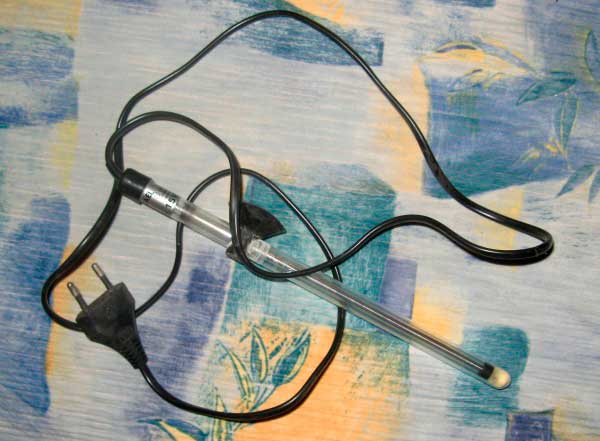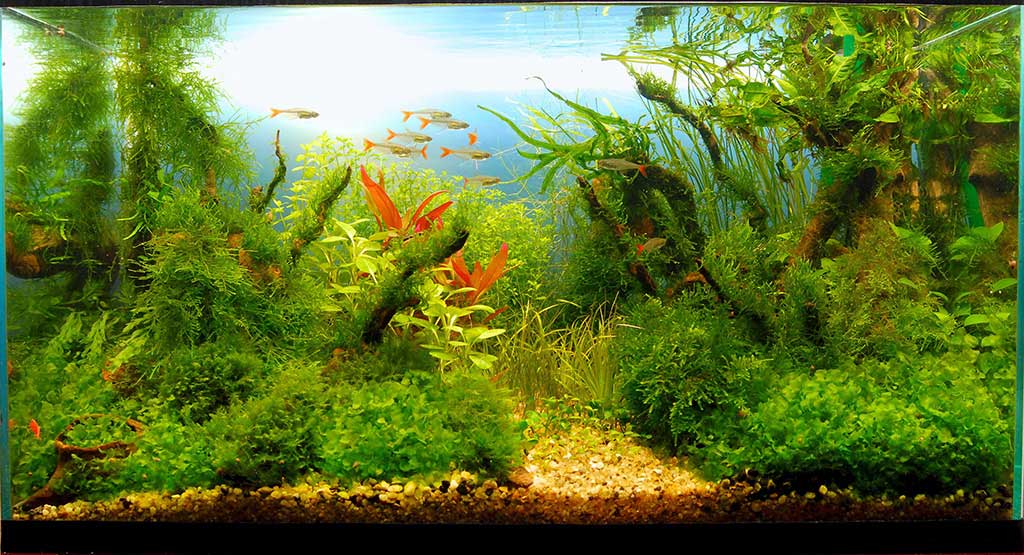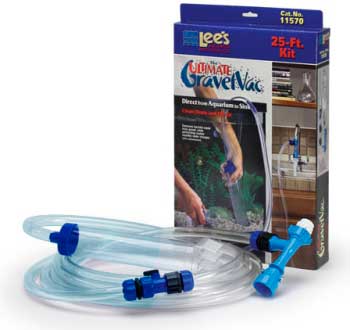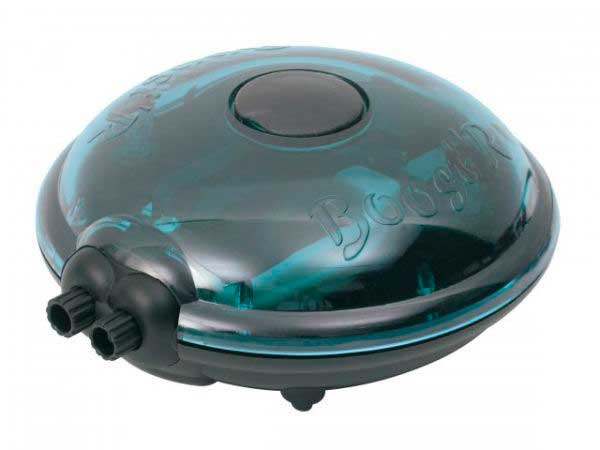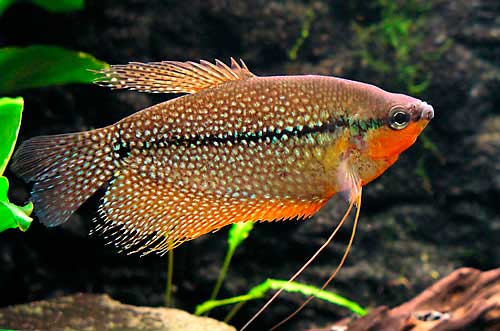An aquarium heater is a device for heating water and maintaining its temperature at a predetermined level. Temperature is one of the main environmental parameters. It is also, perhaps, the most variable of all parameters that should be considered when creating comfortable conditions for living creatures. Since most fish species adapted to aquarium conditions are natives of the tropics, they prefer higher temperatures than those that can be set inside our homes, especially in the fall and winter.
So, if you are going to keep tropical fish behind the glass of your aquarium, then you need to buy an aquarium heater. Before going to the pet store, let’s understand what types of these devices exist? What power of the device you need exactly you? What design to prefer from the variety offered?
The simplest designs
In the simplest case, the aquarium heater is the heating element itself. In 99 percent of industrial designs, the heating element is currently represented by a spiral of high-resistance nichrome wire heated by an electric current flowing through it. The power of these devices ranges from 25 to 300 watts.
Salt heater for aquarium
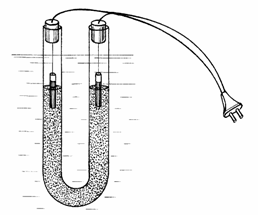
Salt heaters used to exist. They were heated by passing an electric current through a salt solution. Such heaters were produced by industry, as well as relatively easy to build by aquarists themselves from improvised materials. Salt heating elements were quite reliable and safe. But the need to select the concentration of salt solution by the consumer himself gradually led to the displacement of these devices from the shelves of stores spiral heaters, the design of which allows the factory to create a fully complete design ready for operation.
Homemade resistive
Homebuilders, especially radio amateurs, have adapted anything that can be heated by electrical energy to heat their pets. The most common variant is powerful resistors placed inside the test tube. The remaining free space between the resistors and the glass of the test tube was filled with dry quartz sand, and the neck of the test tube was filled with waterproof compound.
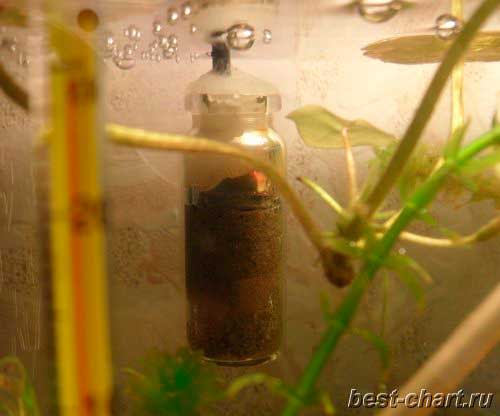
By the way, it is also desirable to choose modern industrial models that the manufacturer was not too lazy to fill with sand. Bulb heaters, which are filled with air, in general, then also work well, but air is known to be a poor conductor of heat. Sand poured inside the bulb will facilitate and accelerate the heat exchange between the coil and the environment.
Aquarium heater with open flame
From the very ancient methods of heating we can remember aquariums equipped with a small furnace in which dry alcohol was burned. With what difficulties and inconveniences were associated with this method of heating water in the aquarium and without my help you and without my help can imagine. To be fair, it should be said that this method was used to heat small aquariums designed for transportation of fish. If the fish had to be transported in winter time, the aquarium, equipped with such a stove, was not worth the price.

Let’s go back to the present day. All spiral designs can be open or sealed. Open designs are less convenient because they require a certain position relative to the water level. Their neck should be above the liquid level, but this level should not be below the waterline – the designation of the beginning of the heating element. If suddenly it happens that the part of the bulb, in which the coil is located, is on the boundary between water and air, then in this place there will be a strong heating of the part of the bulb that is above the water. As a result of strong uneven heating of neighboring parts of the glass, it will burst with all the unpleasant consequences.
Airtight constructions
The hermetically sealed bulb can be completely submerged away from the water surface (the permissible immersion depth is usually about one meter). This prevents the coil from entering the interface. Nevertheless, it is important to remember to switch off the heater when changing the water. The water can only be drained after the heater has cooled down. And the heater can be switched on again only after its part containing the heating element is completely hidden under water. This will prevent the heater bulb from cracking.
Heating cables
The glass tube – bulb is not the only possible option for a modern heater.
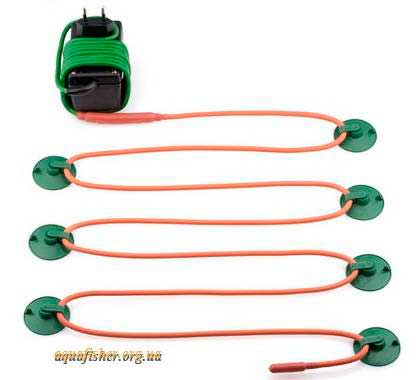
There are aquarium heating cables that are laid in the ground. These cables can be attached to the bottom of the aquarium with suction cups. When installing them, make sure that the cable does not come into direct contact with the glass on the bottom of the aquarium.
This arrangement of the heating element is very physiological. In particular, this arrangement of the heater creates a thermal flow of water – warm water rises up, cold water falls down. This creates more comfortable conditions for plant roots and prevents water stagnation in the ground.
The disadvantages of such a system include the difficulty of replacing the cable if it malfunctions.
Heating trays
As an extension of the above described system, there are so-called heating boards. They are located outside the aquarium under the bottom of the aquarium. Their dimensions must therefore correspond to the dimensions of the bottom. These devices are either included with the aquarium or made to order or bought separately, but you need to know exactly what model should be bought for your aquarium. This design is also difficult to replace in case of malfunction. You will have to restart the entire aquarium.
This variant of the heater as you can see is not located inside the aquarium, but outside.
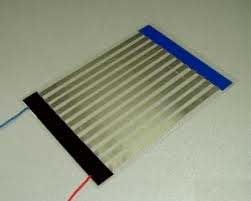
In addition to such an outdoor heater there are outdoor flow-through, and even outdoor storage aquarium heaters. Also some manufacturers of outdoor aquarium filters provide a special compartment inside it, in which you can install the heater then the water flowing through the filter, will not only be cleaned, but also heated.
Almost all external aquarium water heating systems were created with one single purpose – not to spoil the appearance of the underwater world with various technical devices. But most external heating systems are difficult to operate and prohibitively expensive. In addition, it is necessary to take measures to correct the temperature of the water, which can cool down while it reaches the pipes from the heater to the aquarium. In addition, modern indoor heaters are quite compact and easily camouflaged. So, in my opinion – the sheepskin is not worth it.
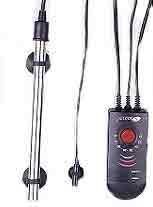
How do I calculate the power required?
All of the above mentioned heating elements, when constantly switched on, provide water heating by a certain number of degrees relative to the room air temperature. Therefore, if we assume that most tropical fish species prefer a water temperature close to 25 degrees Celsius, and the air temperature in our apartments during the winter period is close to 18 – 20 degrees. The power of the heater should be chosen so that one liter of water of the aquarium, which you are going to heat came 1 watt of power of the heater.
In other words, for a fifty-liter aquarium you need a heater with a capacity of 50 watts. But this power is better to provide not one heater, and two half power. That is, the fifty-liter vessel is better to install two heaters at 25 watts each. This is due to the fact that in case of failure of one non-regulated heater water temperature will not drop to a critical point and fish will not freeze. If the regulating scheme of the regulated heaters fails, again, half the power of the spoiled device will not allow you to excessively raise the temperature and cook your fish soup.
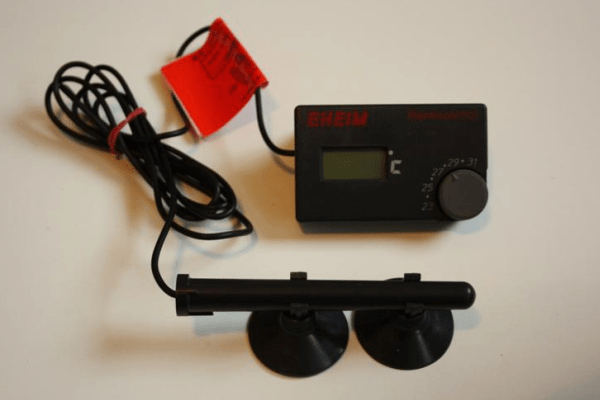
Aquarium heater with temperature controller
We have moved smoothly and quietly on to thermostats. Isolated heating elements are sold today relatively rarely. More often, a modern heater for aquarium has in its composition device to maintain the temperature at a given level. The presence of such a device is very easy to maintain the necessary temperature regime. Thermoregulators can be a bimetallic thermosensitive plate closing the contacts of the heater when the temperature drops and open the electrical circuit when the temperature reaches the set point. Thermoregulators of this type are more often structurally combined with a heating element in one bulb. The temperature regulator is located on the sealing cover. The temperature range of such devices is 18 to 38 degrees Celsius. A heater equipped with a thermoregulator can be selected somewhat more powerful. For 1 liter – 1.5 watts.
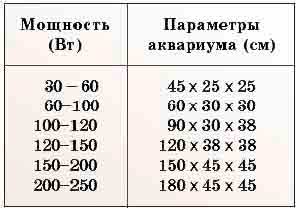
The electronic circuits of temperature controllers are more complex. More often they are made in the form of a separate unit located outside the aquarium. For its operation requires a semiconductor temperature sensor, which is located at a distance of about five centimeters from the heater. Electronic circuits are able to more accurately maintain the temperature down to 0.1 degrees. For aquarium practice amateur maintenance of temperature with such precision, as a rule, is not necessary. And the price of electronic thermoregulators is higher than that of designs with bimetallic plate. In addition, it is necessary to pull inside the aquarium an additional wire to the temperature sensor from the thermostat.
How to place the aquarium heater
It is desirable to place the heater so that it is in the water flow. Generally – the heater itself also creates a small current due to the upward movement of water heated by it. Nevertheless, if not far from the heater will beat a fountain of bubbles from the compressor, the temperature in all corners of the vessel will be more uniform.
This is probably the end of this brief review. I hope this article was useful to you in some way and will help you make the right choice of this important equipment, based on the technical knowledge gained. I hope you can choose the design, shape, color and manufacturer yourself.
